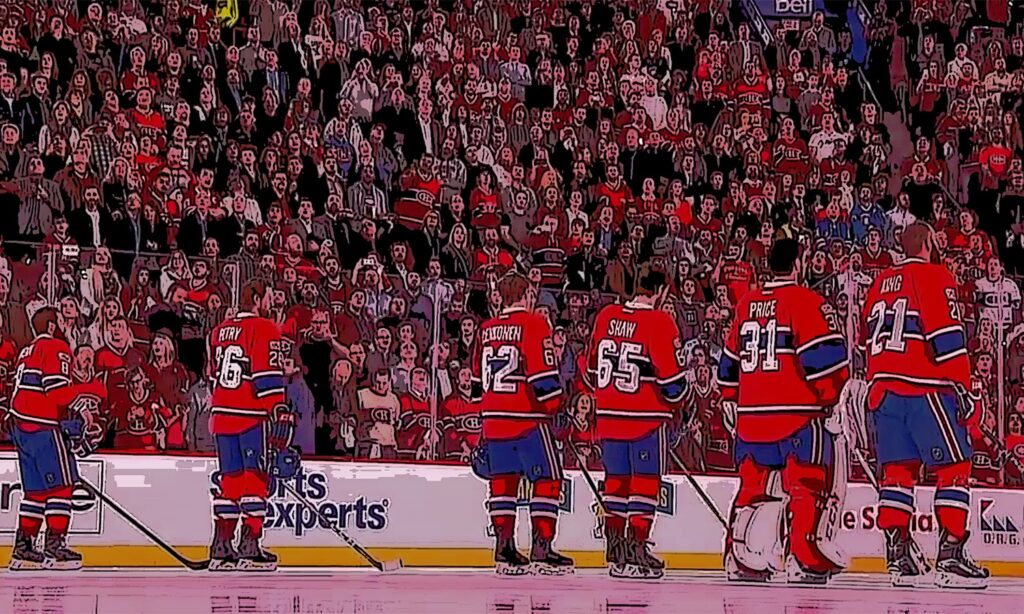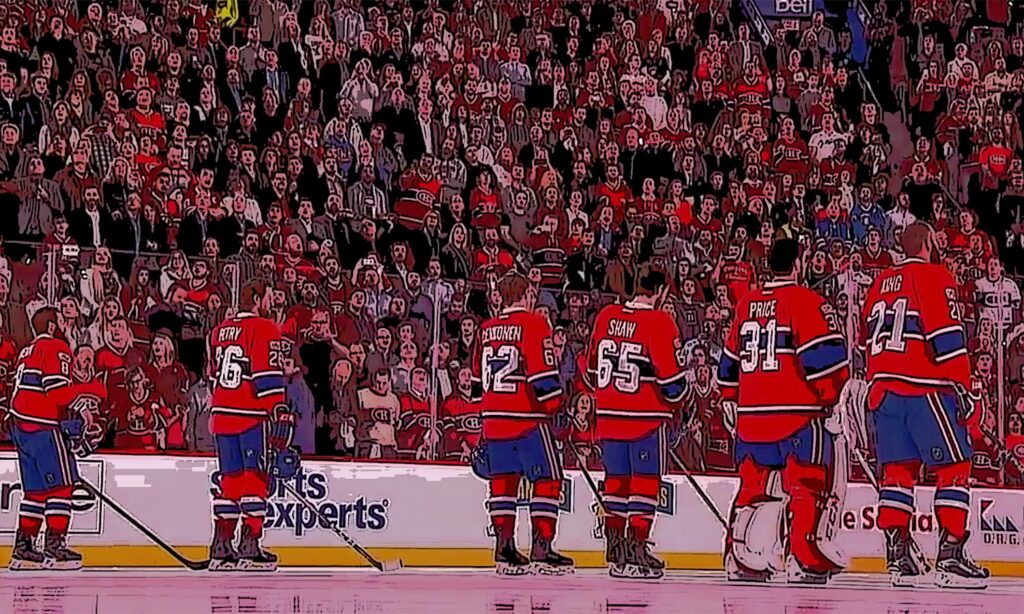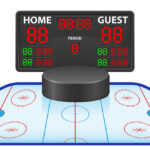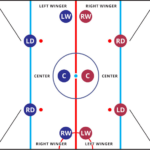A standard hockey game lasts 60 minutes, divided into three 20-minute periods. Overtime and shootouts may extend the duration.
Hockey is a fast-paced and thrilling sport enjoyed by millions worldwide. Each game consists of three 20-minute periods, providing a total of 60 minutes of intense action. Teams compete on an ice rink, aiming to outscore their opponents by shooting the puck into the opposing net.
The game’s duration may extend due to overtime or shootouts, especially during playoffs or tournaments. Understanding the basic structure of a hockey game helps fans and newcomers appreciate the sport’s dynamics and excitement. Whether you are a seasoned fan or new to hockey, knowing the game’s length and format enhances the viewing experience.

Credit: www.gaimday.com
Game Duration
Hockey is an exciting and fast-paced sport. Understanding the game’s duration is essential for fans and players. This section explains how long a typical hockey game lasts, including regulation time and overtime.
Regulation Time
A standard hockey game consists of three periods. Each period lasts 20 minutes of playtime. Between periods, there are 15-minute intermissions. So, the total regulation time is 60 minutes. Here’s a breakdown:
| Period | Duration |
|---|---|
| 1st Period | 20 minutes |
| 2nd Period | 20 minutes |
| 3rd Period | 20 minutes |
Adding intermissions, the entire game takes around 2 hours. This includes stoppages and breaks.
Overtime
Games tied at the end of regulation time go into overtime. Overtime rules vary by league. In the NHL, regular-season overtime is 5 minutes of sudden death. If still tied, the game proceeds to a shootout.
- 5 minutes sudden death
- Shootout if still tied
In playoff games, overtime periods last 20 minutes each. They play until a team scores. This can extend the game significantly. Here’s an example:
- Overtime 1: 20 minutes
- Overtime 2: 20 minutes (if needed)
- Continue until a goal is scored
Overtime ensures an exciting finish. Fans love the suspense and thrill of sudden death.
Periods And Intermissions
Understanding the structure of a hockey game helps fans follow the action. A game is divided into periods and breaks. These divisions ensure the game flows smoothly.
Number Of Periods
A standard hockey game is divided into three periods. Each period lasts 20 minutes. This structure keeps the game exciting and easy to follow.
In total, the game time is 60 minutes. But, this does not include intermissions or stoppages.
Length Of Intermissions
After each period, there is a break called an intermission. The intermission usually lasts 15 minutes. During this time, players rest and strategize.
Intermissions also give fans a chance to grab snacks or use the restroom. For TV broadcasts, intermissions are used for ads and analysis.
| Periods | Length |
|---|---|
| First Period | 20 minutes |
| Second Period | 20 minutes |
| Third Period | 20 minutes |
In total, there are two intermissions in a game. This makes the total length of the game around 90 minutes, including breaks.
- First Period: 20 minutes
- Intermission: 15 minutes
- Second Period: 20 minutes
- Intermission: 15 minutes
- Third Period: 20 minutes
Understanding these timings helps fans plan their viewing experience better.
Overtime Rules
Hockey games often extend beyond the regular time due to tied scores. Overtime rules determine the winner in such cases. These rules vary between the regular season and playoffs.
Regular Season
During the regular season, if the game ends in a tie, teams play overtime. Overtime lasts for 5 minutes. Teams play with three skaters each. The first team to score wins. If no one scores, the game moves to a shootout.
The shootout consists of three players from each team. Each player gets one shot. The team with the most goals wins. If still tied, the shootout continues with one player from each team. This sudden death format continues until one team scores more.
Playoffs
Playoff games have different rules for overtime. There is no shootout in the playoffs. Instead, teams play sudden-death overtime periods. Each overtime period lasts for 20 minutes. The first team to score wins the game.
Teams play with five skaters each, just like in regular time. If no one scores, another 20-minute period is played. This continues until a goal is scored. Playoff overtime can be intense and last for multiple periods.
| Scenario | Overtime Duration | Number of Skaters | Resolution |
|---|---|---|---|
| Regular Season | 5 Minutes | 3 per team | Shootout if no goal |
| Playoffs | 20 Minutes | 5 per team | Continues until goal |

Credit: www.sportsrec.com
Shootout Explanation
In hockey, the shootout is an exciting way to resolve tied games. Fans love the intense moments and quick action. This section explains the shootout in detail.
When It Occurs
A shootout happens after overtime ends in a tie. Overtime is a short period to break the tie. If no team scores, the shootout starts.
Shootout Procedure
During the shootout, each team selects three players. These players take turns trying to score. The goalie tries to stop them. Each player gets one chance to shoot.
The team with the most goals after three rounds wins. If it’s still tied, the shootout continues. Each team gets one shot per round. This goes on until one team scores and the other does not.
| Step | Action |
|---|---|
| 1 | Select three players |
| 2 | Players take turns shooting |
| 3 | Goalie tries to stop shots |
| 4 | Most goals after three rounds wins |
| 5 | If tied, continue one shot per round |
The shootout adds thrill to the game. Fans cheer for their favorite players. The pressure is high, and every shot counts. This makes the shootout a memorable part of hockey.
Penalty Time
Penalty time in hockey affects the game’s length significantly. Players spend time in the penalty box for breaking rules. This can change the pace and outcome of the game.
Types Of Penalties
Hockey penalties come in different types. Each type affects the game differently.
- Minor Penalties: These last 2 minutes. Examples include tripping and holding.
- Major Penalties: These last 5 minutes. Examples include fighting and major boarding.
- Misconduct Penalties: These last 10 minutes. Examples include abuse of officials.
| Type of Penalty | Duration | Examples |
|---|---|---|
| Minor | 2 minutes | Tripping, Holding |
| Major | 5 minutes | Fighting, Major Boarding |
| Misconduct | 10 minutes | Abuse of Officials |
Impact On Game Duration
Penalty time can extend the game’s length. Teams play short-handed during penalties.
This can lead to more stoppages and changes in momentum.
More penalties mean more time spent on special teams. Power plays and penalty kills add excitement and tension.
Games with many penalties often last longer. Fans enjoy the extra action.
Referees play a big role in managing penalties. Their decisions can change the game’s flow.

Credit: strathmorenow.com
Television Timeouts
Television timeouts are breaks during a hockey game. They allow broadcasters to air commercials. These timeouts can affect the flow and length of the game. Let’s explore how they work.
Frequency
Television timeouts occur three times in each period. They usually happen at the first stoppage after the 6, 10, and 14-minute marks. Each timeout lasts for two minutes.
| Period | Timeouts | Duration |
|---|---|---|
| First | 3 | 2 minutes each |
| Second | 3 | 2 minutes each |
| Third | 3 | 2 minutes each |
Effect On Overall Time
Television timeouts add six minutes per period to the game. With three periods, this adds 18 minutes in total. This extra time can make the game feel longer. Fans at home and in the arena notice these breaks.
Teams use these breaks to rest and strategize. It can impact the game’s pace and energy. Coaches often discuss tactics during these pauses.
Overall, television timeouts ensure broadcasters can show commercials. They also offer teams short rest periods. This balance keeps everyone engaged.
Injury Stoppages
In hockey, injury stoppages can affect the game’s duration. When a player gets hurt, the game pauses. This ensures safety and proper medical attention.
Handling Injuries
When a player is injured, referees stop the game. Medical staff quickly assess the situation. If needed, they help the player off the ice. Teams get a short break during this time.
Injury stoppages can vary in length. Minor injuries might only take a few minutes. Serious injuries might take longer. Safety is always the top priority.
Time Considerations
Injury stoppages affect the overall game time. Standard hockey games are 60 minutes long. This does not include stoppages.
Here is a breakdown of how time is managed:
| Event | Time Added |
|---|---|
| Minor Injury | 2-5 minutes |
| Serious Injury | 5-15 minutes |
Despite stoppages, games aim to finish within a reasonable time frame. Fans and players both appreciate this effort.
Referees and medical staff work fast. They ensure the game continues smoothly. This keeps the game fair and exciting.
Factors Affecting Game Length
Understanding the factors affecting game length in hockey is crucial. These factors can vary, leading to longer or shorter games. Let’s explore the main elements.
Pace Of Play
The pace of play in hockey greatly impacts game length. Faster games typically finish sooner. Teams with quick transitions and efficient plays keep the game moving. Conversely, slower-paced teams may drag the game out.
Additionally, the number of stoppages affects the pace. Frequent whistles for penalties, offsides, or icing can slow down the game. Less stoppage means a shorter game duration.
Special Situations
Special situations like overtime and shootouts add time to the game. Regular season games tied after three periods go to a 5-minute overtime. If still tied, a shootout follows. Playoff games have continuous overtime periods until a goal is scored.
Another special situation is injuries. Serious injuries can result in extended stoppage times. Medical staff attends to the injured player, which can delay the game.
Television timeouts also contribute to game length. These breaks are scheduled to fit in commercials and can extend game duration.
Frequently Asked Questions
How Long Does A Hockey Game Typically Last?
A hockey game typically lasts around 2. 5 hours. It includes three 20-minute periods, plus intermissions and potential overtime.
What Is The Length Of A Hockey Game?
A standard hockey game lasts 60 minutes, divided into three 20-minute periods. There are intermissions between periods.
What Is The Duration Of A Hockey Match?
A hockey match lasts 60 minutes, divided into three periods of 20 minutes each.
How Long Do You Play In Hockey?
A hockey game lasts 60 minutes, split into three 20-minute periods. Overtime and shootouts can extend the play.
Conclusion
Understanding the duration of a hockey game helps fans and players better appreciate the sport. Standard games last about 60 minutes, excluding overtime and shootouts. Knowing this helps you plan your time and enjoy the excitement fully. Stay updated with game rules for the best experience.


